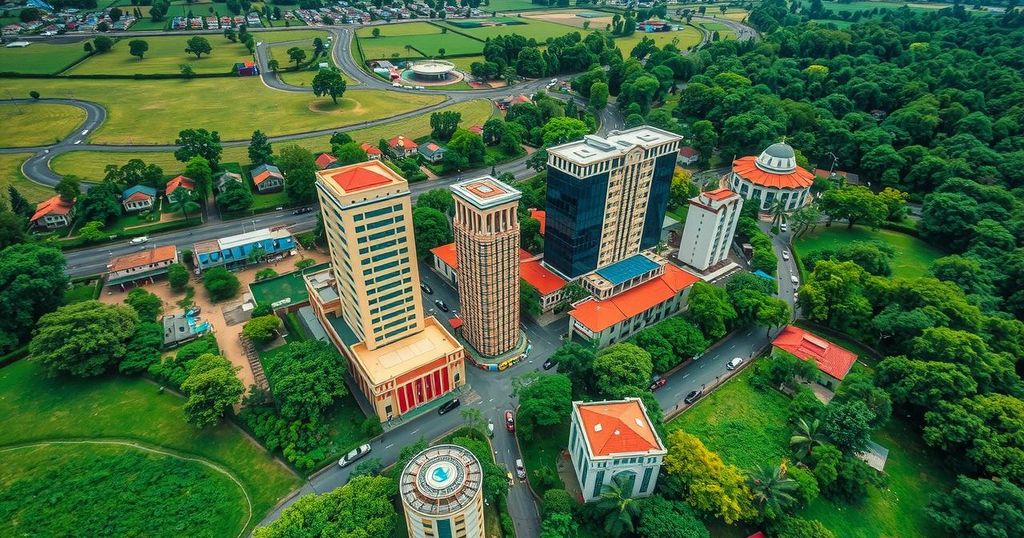Uganda Returns to Commercial Banks Amid Diminished Credit Options

Uganda turns to commercial banks for borrowing as alternative financing sources diminish, with debt nearing $2 billion. This includes a $190 million loan pursuit for Umeme Ltd. exit claims and additional funds for essential projects like energy and transport. The growing dependence on commercial loans is reflected in rising debt-to-GDP ratios and external debt servicing costs.
Uganda is returning to commercial banks for borrowing, given the scarcity of financing alternatives. The nation’s outstanding debt to commercial banks has approached $2 billion, primarily driven by the need to fund energy and transportation projects. This week, Uganda pursued a $190 million loan from local banks to address exit claims from Umeme Ltd., which is terminating a power distribution concession this month.
Stanbic Bank Uganda Ltd is leading the arrangement for this loan, although specific details regarding other participating banks and the interest rate remain unclear. Parliament has recently approved this loan request. Additionally, the government is seeking $50 million for the recapitalization of the Uganda Electricity Distribution Company Ltd, following Umeme Ltd.’s exit, which will also be sourced from commercial lenders. More than $1 billion is projected to finance the standard gauge railway project.
As per the debt sustainability analysis report from September 2024, commercial banks account for 12 percent ($1.73 billion) of Uganda’s external debt. In contrast, bilateral creditors like China hold 23 percent ($3.41 billion), with multilateral creditors, including the World Bank and International Monetary Fund, holding the majority at 65 percent ($9.77 billion). Patrick Ocailap, Deputy Secretary to the Treasury, remarked, “The message we are sending to investors is that more commercial borrowing is required to execute certain projects and spending commitments.”
Uganda’s overall external debt grew from $14.59 billion in June 2024 to $14.91 billion by September 2024. Stanbic Bank Uganda is the primary provider of commercial debt to the government, holding approximately $760 million of these loans reported by September 2024. Many of these loans are linked to floating interest rates.
Previously, Uganda also secured a $400 million loan from Standard Chartered Bank for the installation of security surveillance cameras across the country. Furthermore, a $2 million loan was provided to National Medical Stores in 2021 by the same bank for essential medicine procurement. External debt servicing costs rose from $240.5 million between April and June 2024 to $363.8 million from July to September 2024, influenced by repayment obligations associated with the Karuma and Isimba hydropower projects.
In summary, Uganda is increasingly relying on borrowing from commercial banks due to diminishing financial alternatives, particularly for significant infrastructure projects. The approval of new loans signifies a growing debt ratio, which, while necessary for development, raises concerns regarding sustainability. Continued borrowing from banks highlights the need for a strategic approach to manage and mitigate rising debt levels effectively.
Original Source: www.zawya.com








